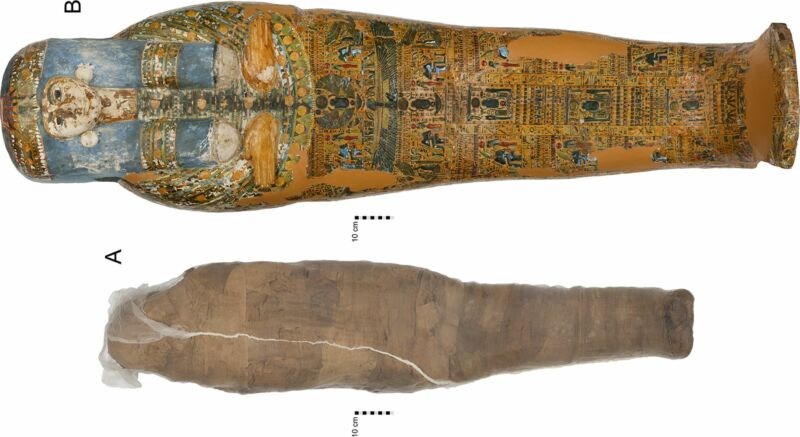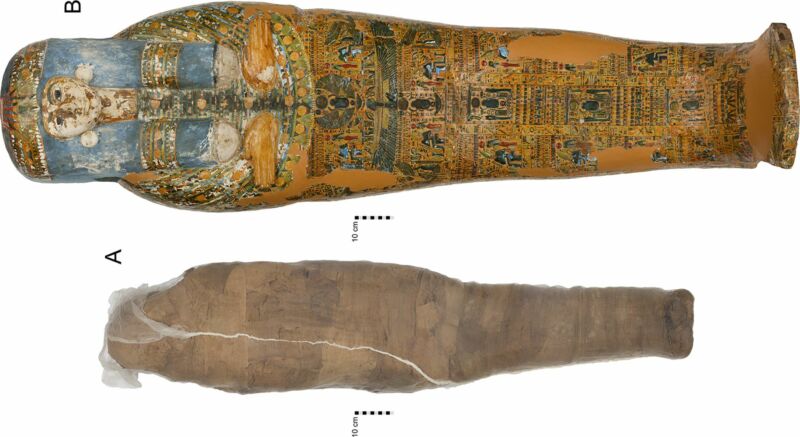
Enlarge / Sir Charles Nicholson donated the mummified person and the coffin to the University of Sydney in 1860, apparently having realized that an entire dead body is a pretty horrific travel souvenir. (credit: Sowada et al, PLOS ONE (CC BY 4.0 https://creativecommons.org/licenses/by/4.0/))
Approximately 3,200 years ago in Egypt, ancient embalmers encased a mummy in dried mud to repair the damage done by careless tomb robbers. Archaeologists recently used a CT scanner to unravel part of the dead person’s story. The study, published in the journal PLOS ONE, revealed an unknown mummification technique, along with a strange tale of grave robbing, family devotion, and mistaken identity.
The person, now known only as NMR.27.3, died relatively young. The name of the deceased is lost to history, and their gender is debatable (more on that later). After death, grave robbers broke into their tomb at least twice, and now archaeologists have pieced together some fragments of the story—mostly the postmortem chapters.
What’s left behind is a rare glimpse of life and death in ancient Egypt. The anonymous mummified person reveals that even years after death, living relatives still cared enough about the deceased to actually have the corpse repaired (sort of) after grave robbers damaged it. And to repair the mummy, ancient embalmers plastered mud over the linen wrappings to help the body hold its shape, a technique that modern archaeologists have never seen before.





